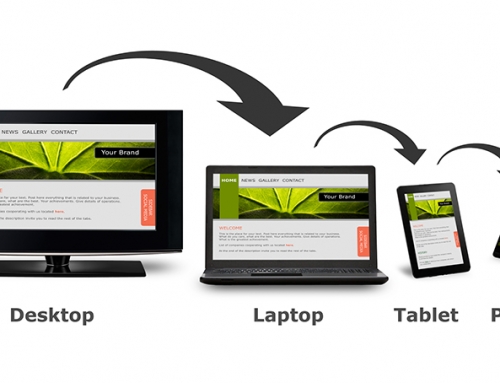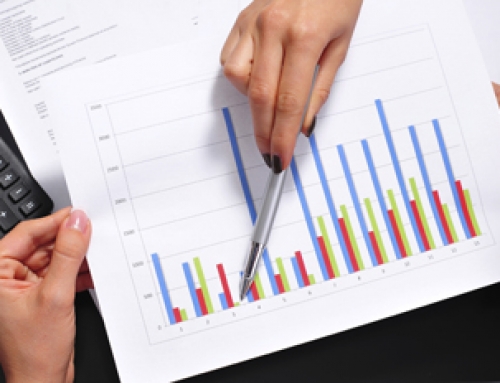Updated data applied to small business benchmarks
The ATO has updated its small business benchmarks with information from key financial ratios drawn from information provided by businesses through activity statements and tax returns. The most recent complete data (for the 2014–15 financial year) allows businesses and their tax agents to use the benchmarks to compare business performance against similar business entities.
Benchmarks are updated on an annual basis, which the ATO says will ensure the benchmarks reflect an accurate performance of businesses over time. You can find the small business benchmarks by business type here (businesses listed A-Z), or by industry here.
The benchmarks can be useful to check if your business performance is within the average range for the industry. There could be valid reasons for performance being outside the average range, but it could also mean these businesses have room for improvement.
The ATO says its benchmark methodology has been verified as statistically valid by an independent organisation and is consistent with international approaches.
Its small business benchmarks:
- are based on the biggest data set available – calculated from tax returns and activity statements from more than 1.4 million small businesses
- account for businesses with different turnover ranges (up to $15 million) across more than 100 industries
- are published as a range to recognise the variations that occur between businesses due to factors such as location and businesses circumstances.
The ATO releases updated benchmark ratios each year based on:
- your business’s business industry code, derived from the Australian and New Zealand Standard Industrial Classification (ANZSIC)
- the main business activity on tax returns
- the trading name of your businesses.
The ATO says that the quickest way to see how a business compares to its competitors is by using the business performance check in the ATO app, which does all the calculations.
You can find the business performance check tool by:
- downloading the ATO app from Google Play, the Windows Phone Store or the Apple App Store
- go to “Business”
- select “Business performance check”
- have your information ready and enter the figures into the tool
- compare the business performance.
The ATO says the personal information entered isn’t recorded and will only be used for completing the tool’s calculations.
Super’s new $1.6m transfer balance cap — what counts towards it?
The transfer balance cap applies to the total amount of superannuation that has been transferred into retirement phase. The balance of assets in pension phase can be held across several accounts, so the number of accounts is immaterial.
The amount of the lifetime cap will start at $1.6 million, and will be indexed periodically in $100,000 increments in line with consumer price index. The ATO says the amount of indexation you will be entitled to “will be calculated proportionally based on the amount of your available cap space”. It says that if, at any time, you meet or exceed the cap, you will not be entitled to indexation.
You will be able to make multiple transfers into the retirement phase as long as you have available cap space.
The transfer balance account works in a similar way to a bank account. Amounts you transfer to, or are otherwise entitled to receive, from the retirement phase give rise to a credit (increase) in your transfer balance account. Certain transfers out of the retirement phase give rise to a debit (decrease) in your transfer balance account. The total value of all of the credits and debits to your transfer balance account at the end of a financial year will count towards the calculation of your total superannuation balance.
The cap limits the amount that you can transfer into retirement phase to start a pension or annuity over the course of your lifetime. The cap also includes the value of pensions or annuities you may start to receive for some other reason, for example:
- your spouse has died and you are receiving, or start to receive, a pension from their superannuation, and
- your former spouse has been ordered to pay you a portion of their pension income stream as part of a family court settlement.
The cap does not apply to any subsequent growth or losses. This means that:
- if you start a pension with assets of $1.6 million and the value of the assets that feeds that pension grows to $1.7 million, you will not exceed your cap
- if you start a pension with $1.6 million and the value of assets goes down over time as you use it to live on or you suffer losses, you can’t “top up” your pension account. You will still be able to access other superannuation amounts you may hold in accumulation phase by taking these as a “lump sum”.
The transfer balance cap will also apply to future “innovative” income stream products. Transition to retirement income streams (TRIS) will not count towards your transfer balance cap (as from July 1, 2017).
When calculating if you have exceeded your cap, the ATO says that it will subtract the value of any structured settlement contributions you’ve made. It also says that if, at July 1, 2017 the total value (as June 30, 2017 or before) of your retirement phase income streams is between $1.6 million and $1.7 million, you have six months to remove the excess capital without penalty.
Active vs passive assets and the small business CGT concession
The small business capital gains tax concessions are extremely valuable, and for small business owners who need to dispose of assets that have risen in value during the time they have owned them, accessing these concessions can mean greatly reducing any consequent tax liability, even to zero.
But to access the CGT concessions some conditions must first be satisfied, such as having an aggregated annual turnover of less then $2 million, and net assets not exceeding $6 million. One of the small business CGT concessions, the 50% asset reduction, comes with one particular condition — that the CGT asset satisfies the active asset test.
A CGT asset is an “active asset” if it is used, or held ready for use, in the course of carrying on a business by the taxpayer (or their affiliate or an entity connected with them, known as relevant entities). For example, a bricks-and-mortar shop held and used by a green grocer to sell fruit and vegetables is an example of an active asset.
Another condition to satisfy this test is that the asset must be an active asset of the taxpayer for the lesser of 7.5 years or half of the relevant ownership period.
However, certain assets are specifically excluded from being an active asset, with one such exclusion applying to assets where the main use by the taxpayer is to derive rent (unless the main use for deriving rent was only temporary). When determining the main use of the asset, the taxpayer is instructed to disregard any personal use or enjoyment of the asset by them (which includes use by affiliates and connected entities).
Carrying on a business
To qualify as an active asset, a tangible CGT asset must be used or held ready for use in the course of carrying on a business, but there is no black-and-white test for determining whether a business is being carried on. However the ATO has enumerated several indicators that may be relevant, including;
- the size, scale and permanency of the activity
- repetition and regularity of the activity
- whether the activity is planned, organised and carried on in a systematic and businesslike manner, and
- the expectation, and likelihood, of a profit.
It can be assumed that the operator of a motel is conducting a business, however most residential rental activities are a form of investment, and do not amount to carrying on a business.
Notwithstanding this, it is possible to conduct a rental property business. To take a real example from the ATO’s case files, it so happened that a taxpayer owned eight houses and three apartment blocks (each comprising six residential units), making a total of 26 properties. The taxpayer actively managed the properties, devoting a significant amount of time to this (an average of 25 hours per week). The ATO concluded this taxpayer was carrying on a business.
So while an asset whose main use is “to derive rent” cannot be an active asset, it has been argued that this exception should not apply to properties where the taxpayer carries on a business of leasing properties (but rather only to passive investments). There have however been legal cases where the courts rejected this argument, stating clearly that it does not matter if the taxpayer is in the business of leasing properties or not.
There is no statutory definition of the word rent that is relevant in this context, so the term takes on its common law meaning.
Where there is a question of whether the amount paid constitutes “rent”, a key factor to consider is whether the occupier has a right to “exclusive possession” of the property. If such a right exists, the payments involved are likely to be rent. Conversely, if the arrangement allows the occupier only to enter and use the premises for certain purposes, and does not amount to a lease granting exclusive possession, the payments involved are unlikely to be rent.
Other relevant factors include the degree of control retained by the owner, the extent of any services performed by the owner (such as room cleaning, provision of meals, supply of linen and shared amenities) and the length of the arrangement.
By way of example, the ATO looked at the operator an eight-bedroom boarding house. The average length of stay was four to six weeks. Visitors were required to leave the premises by a certain time and the proprietor retains the right to enter the rooms. He pays for all utilities and provides cleaning and maintenance, linen and towels and common areas such as a lounge room, kitchen and recreation area. The ATO concluded that the amounts received were not rent.
What is main use?
The term “main use” is not defined in the relevant laws. Therefore resolving the matter in regard to the mixed use of assets is likely to involve a consideration of various factors, however most important will be the comparative level of income derived from the different uses of the asset.
By way of example, consider a taxpayer who owns land on which there are several industrial sheds. He uses one shed (45% of the land area) to conduct a motorcycle repair business and leases the other sheds (55% of the land by area) to unrelated third parties. The income derived from the repair business is 80% of total income, with the rest derived from leasing the other sheds. Having regard to all the circumstances, the ATO considered that the “main use” of the taxpayer’s land is not to derive rent.







